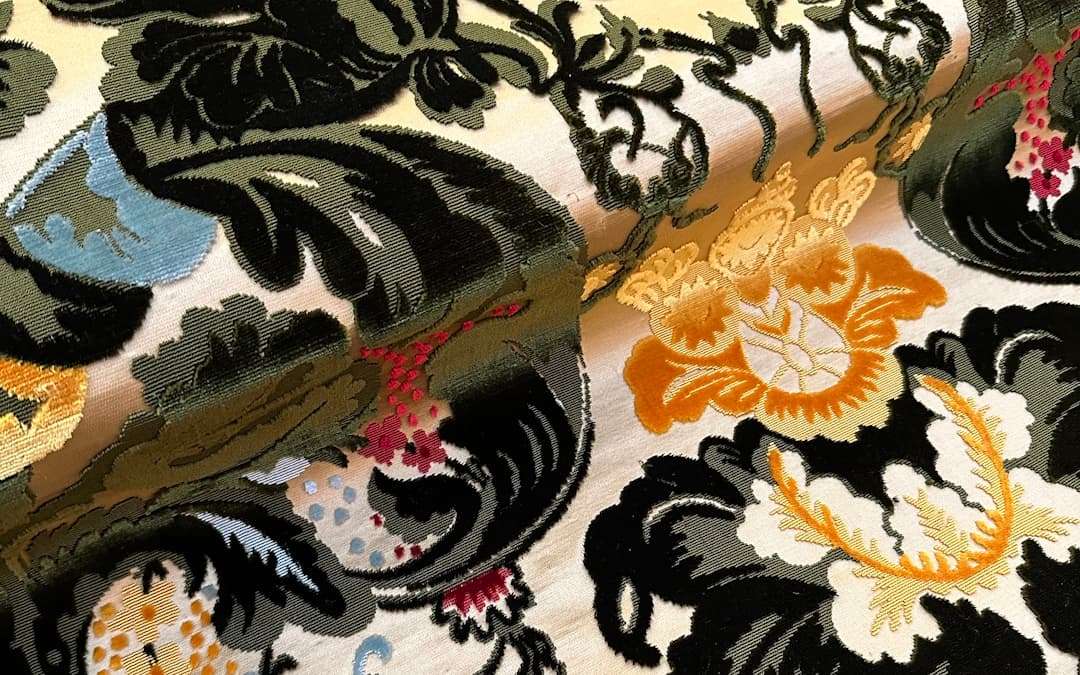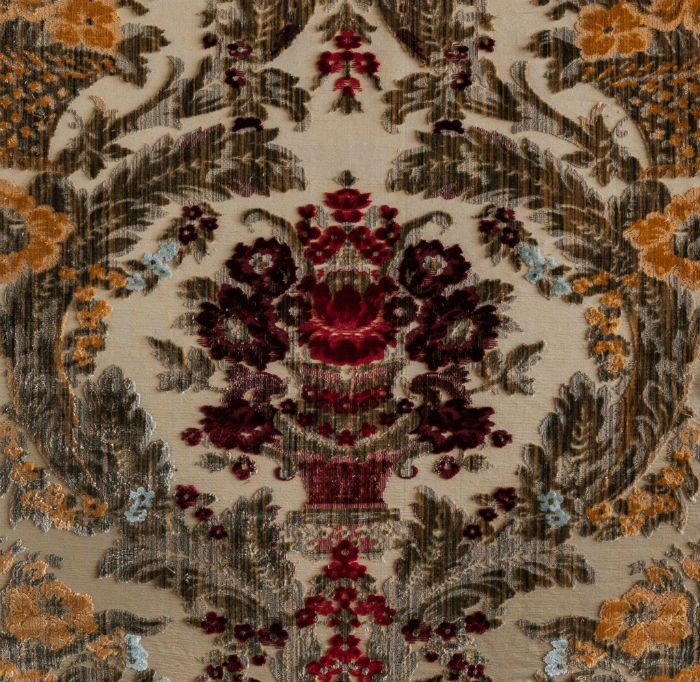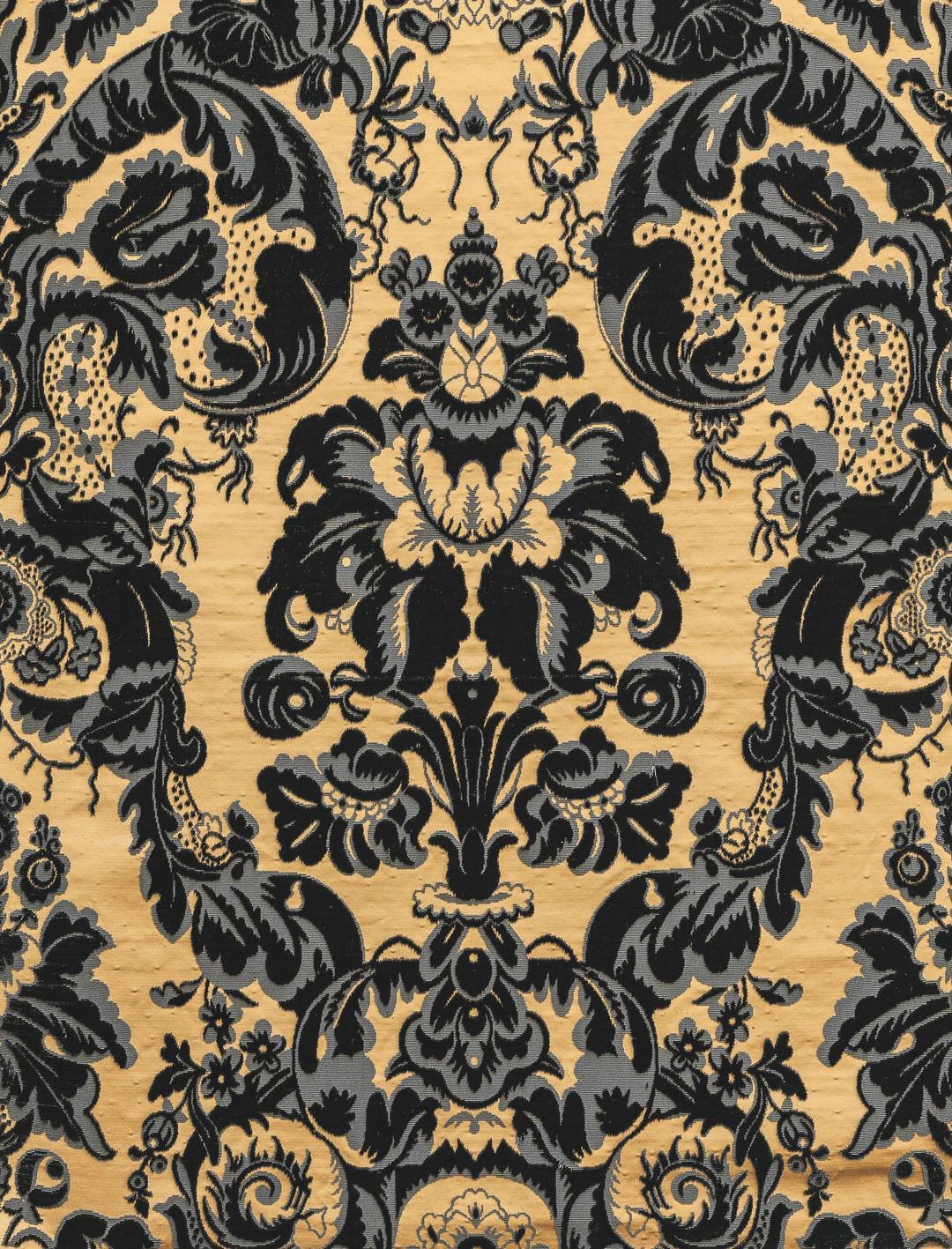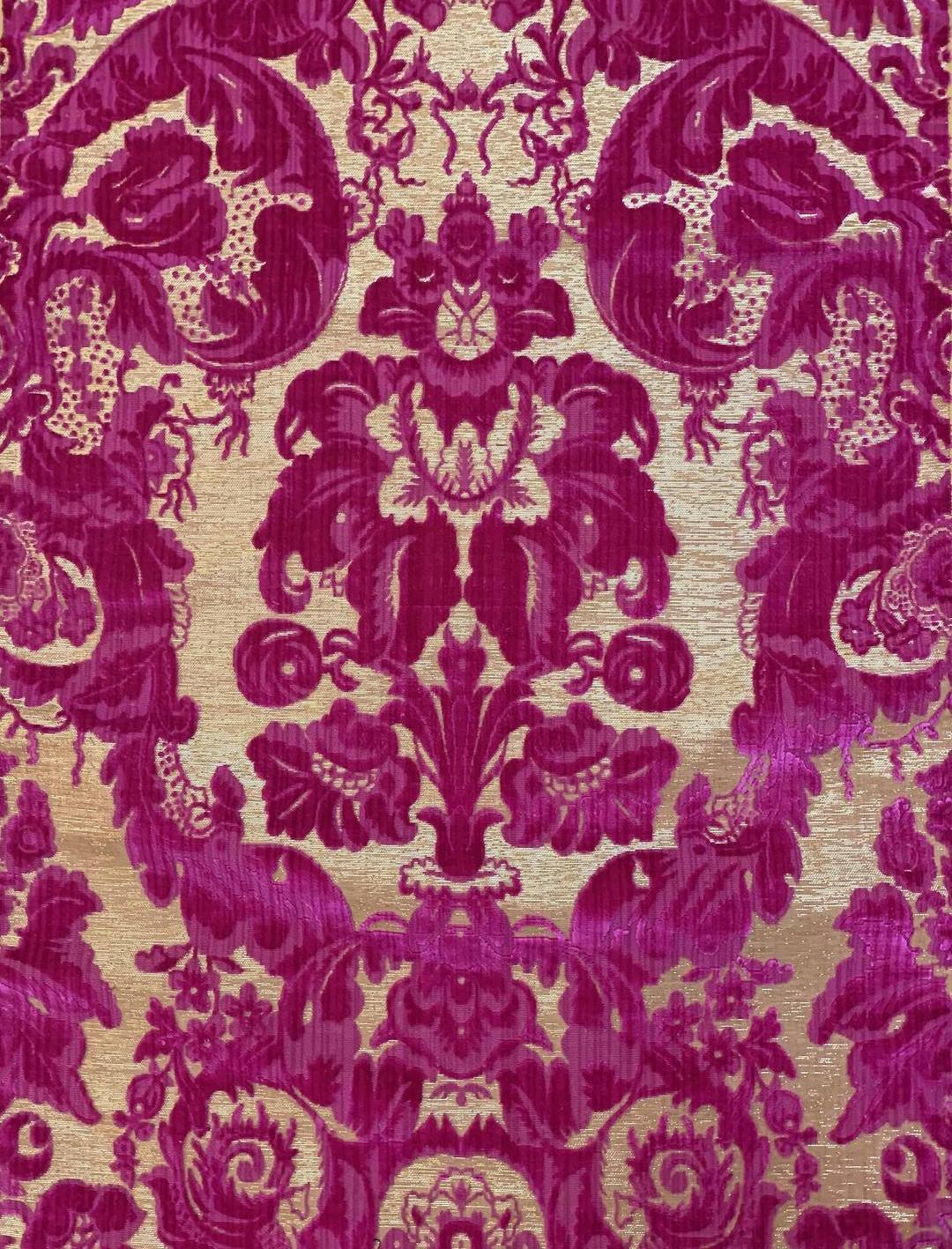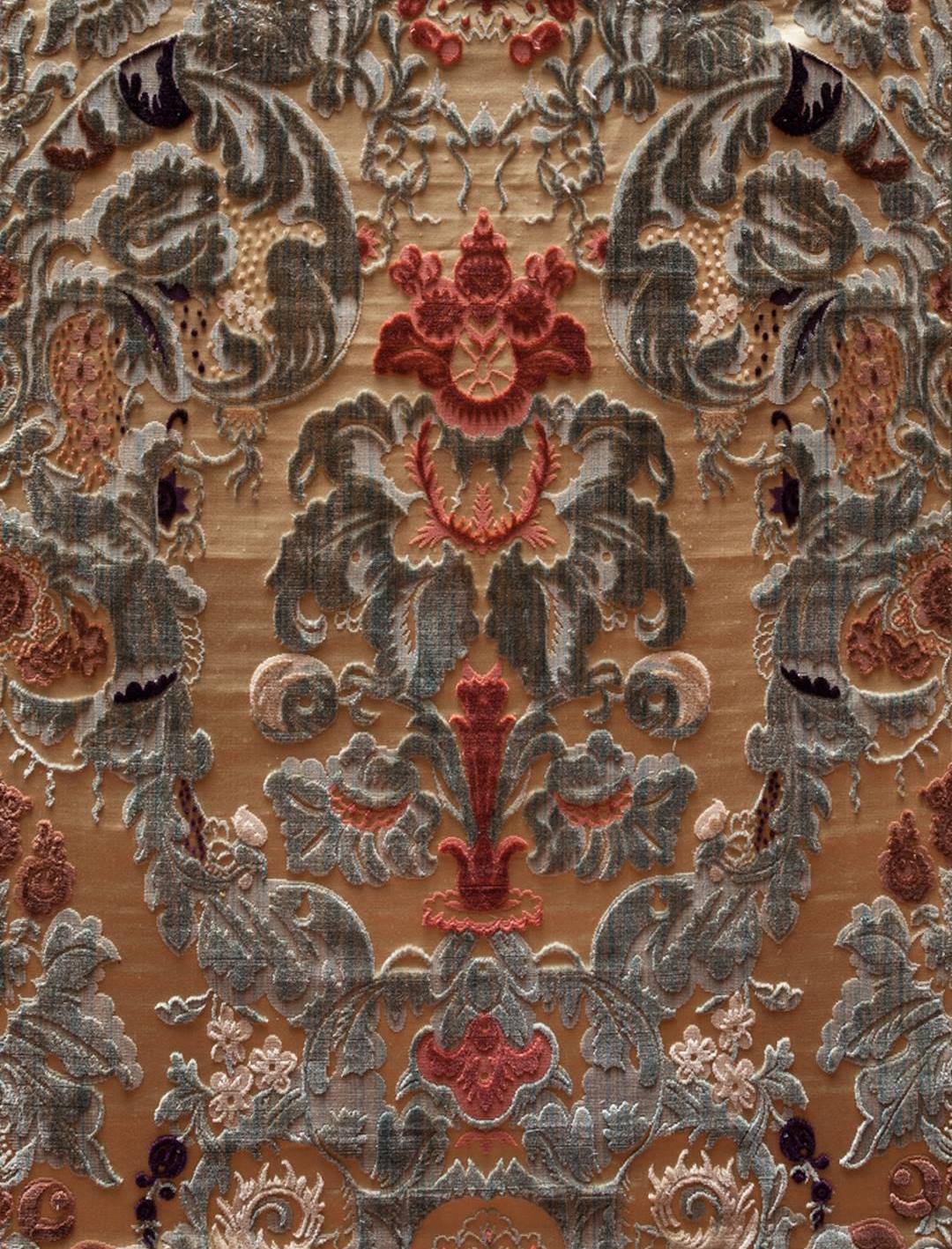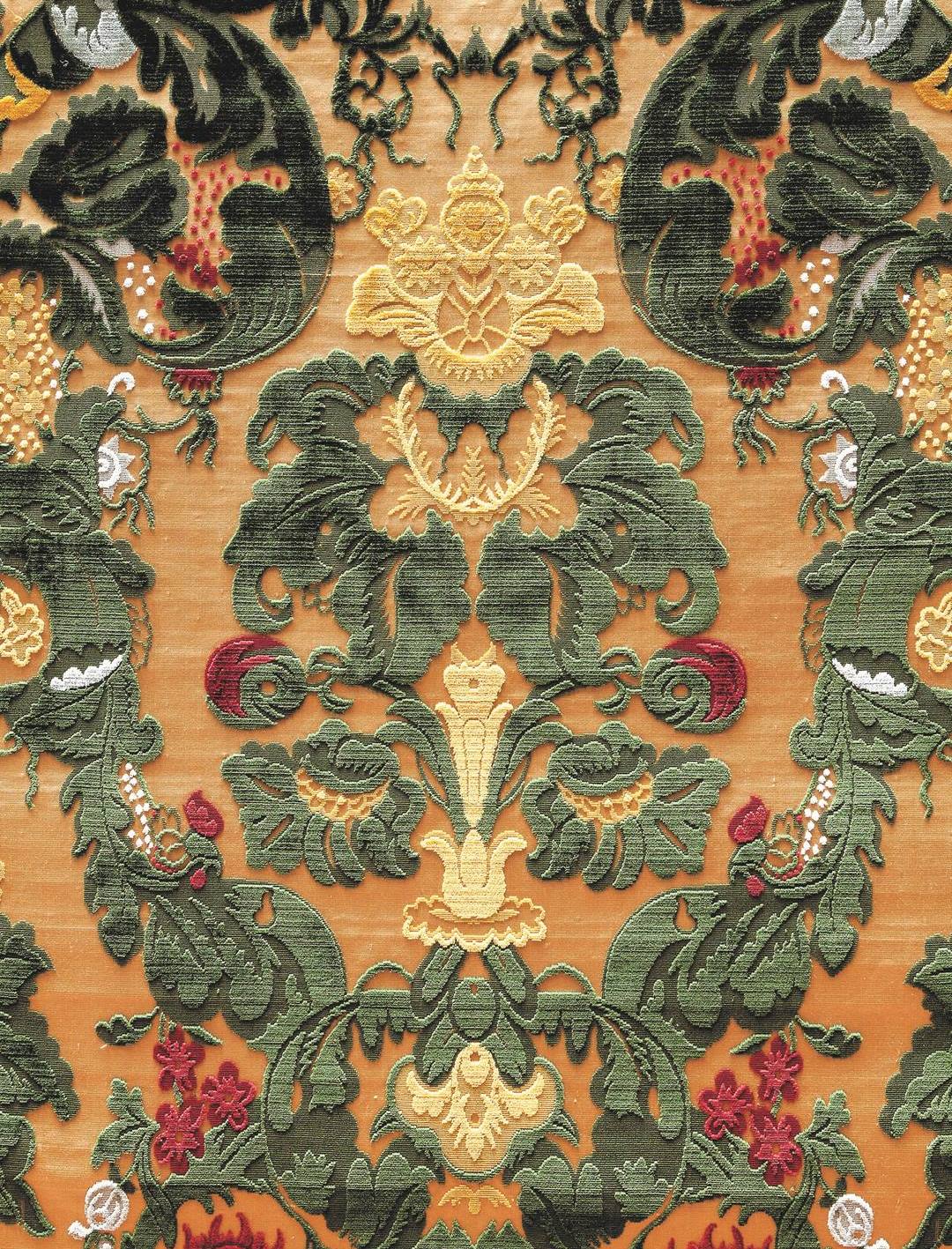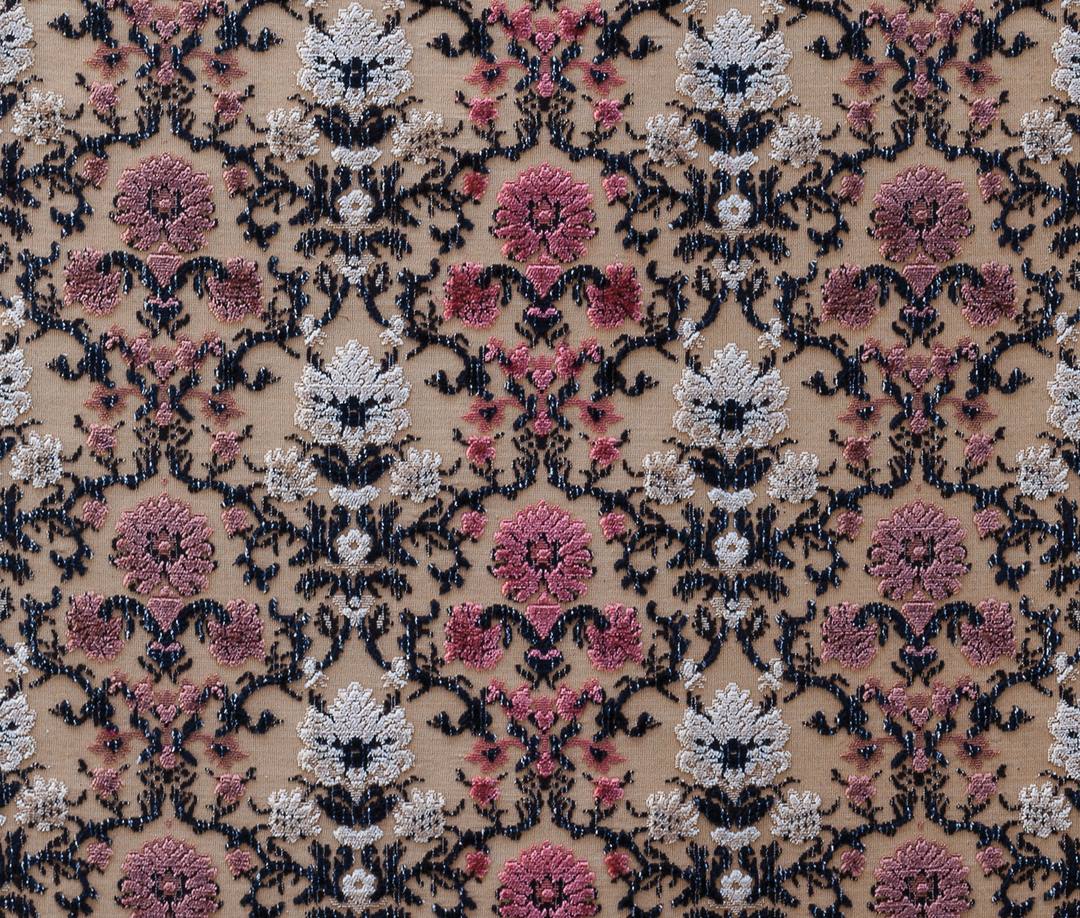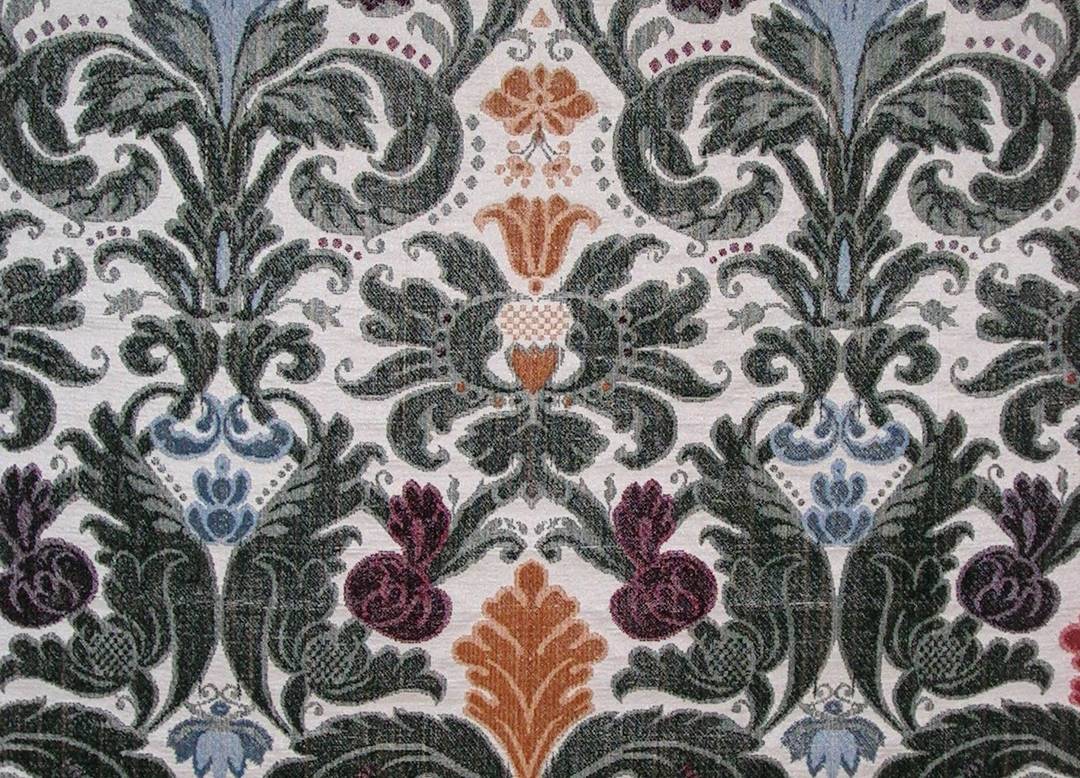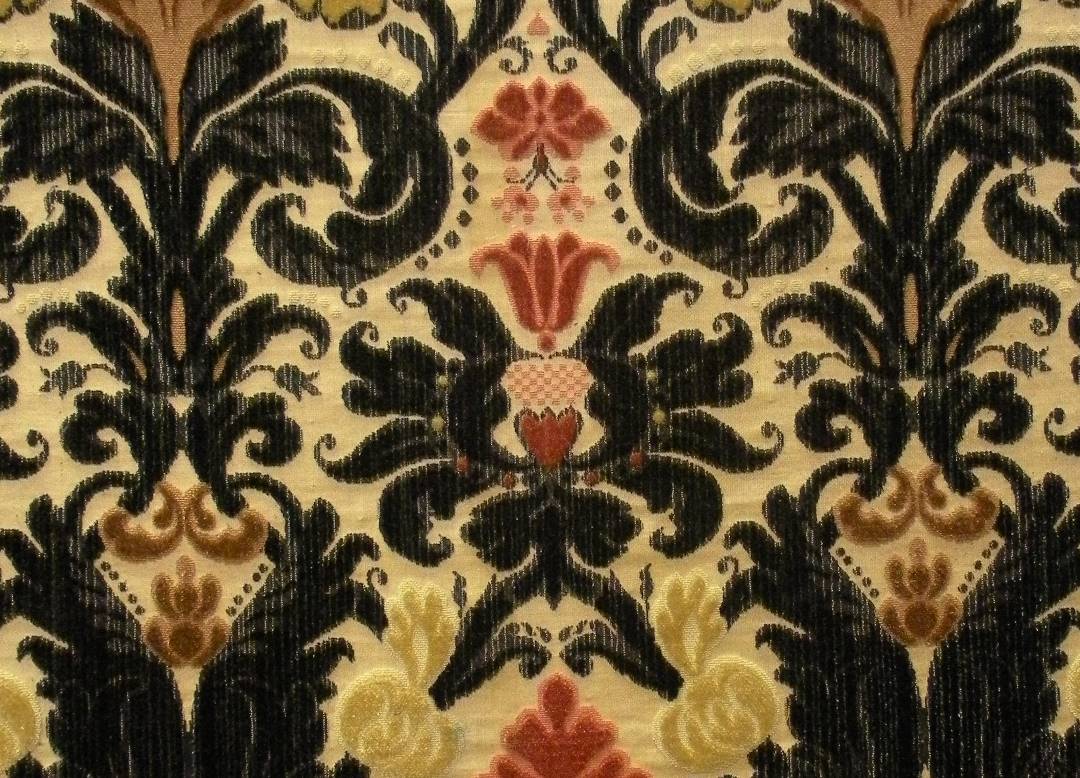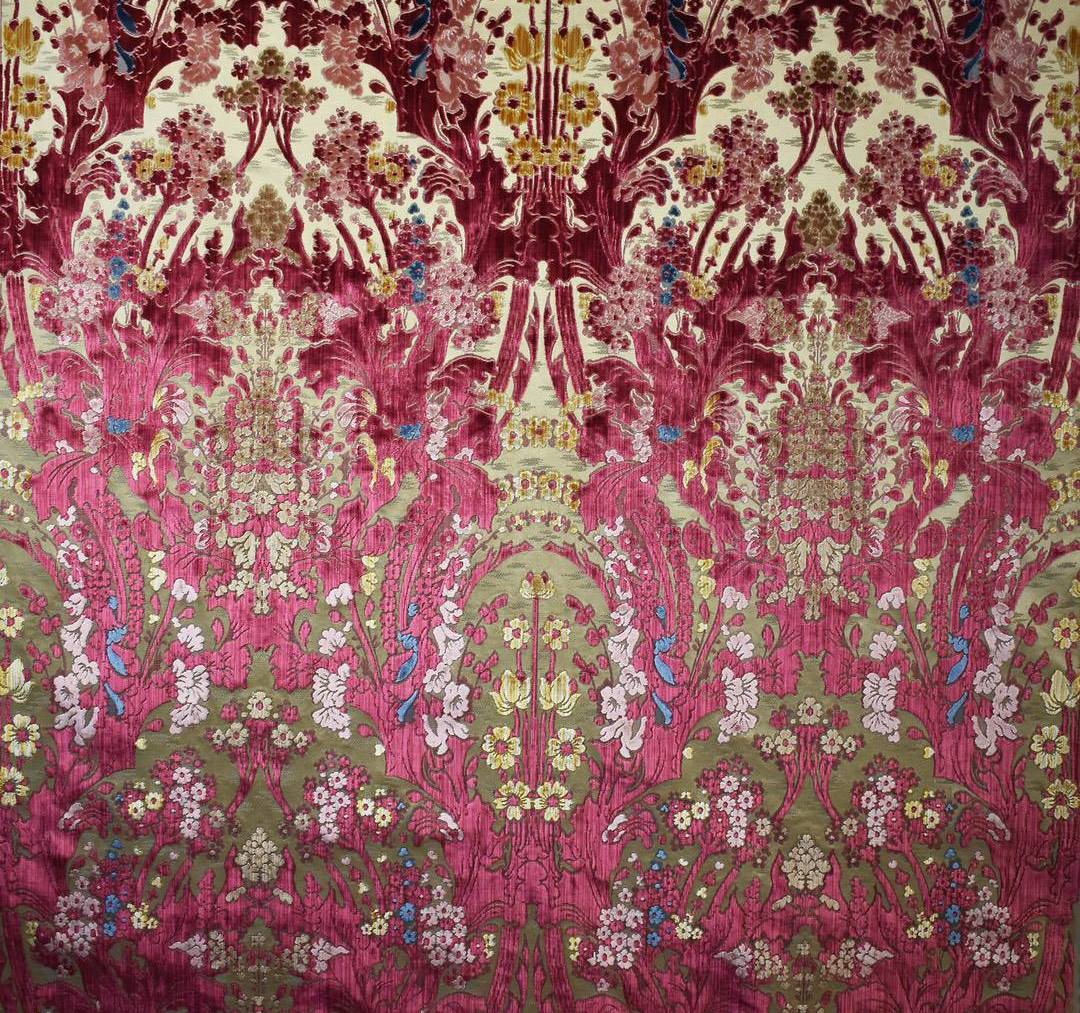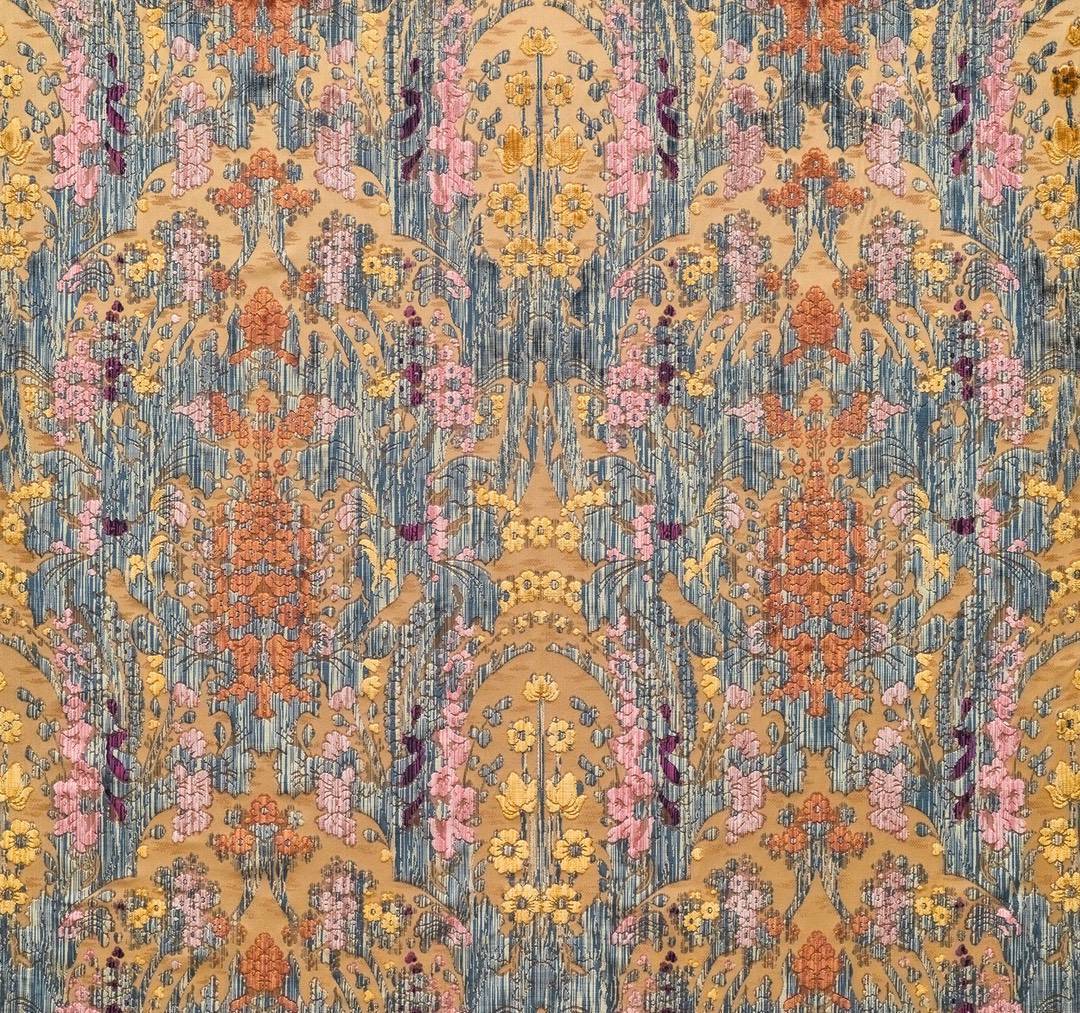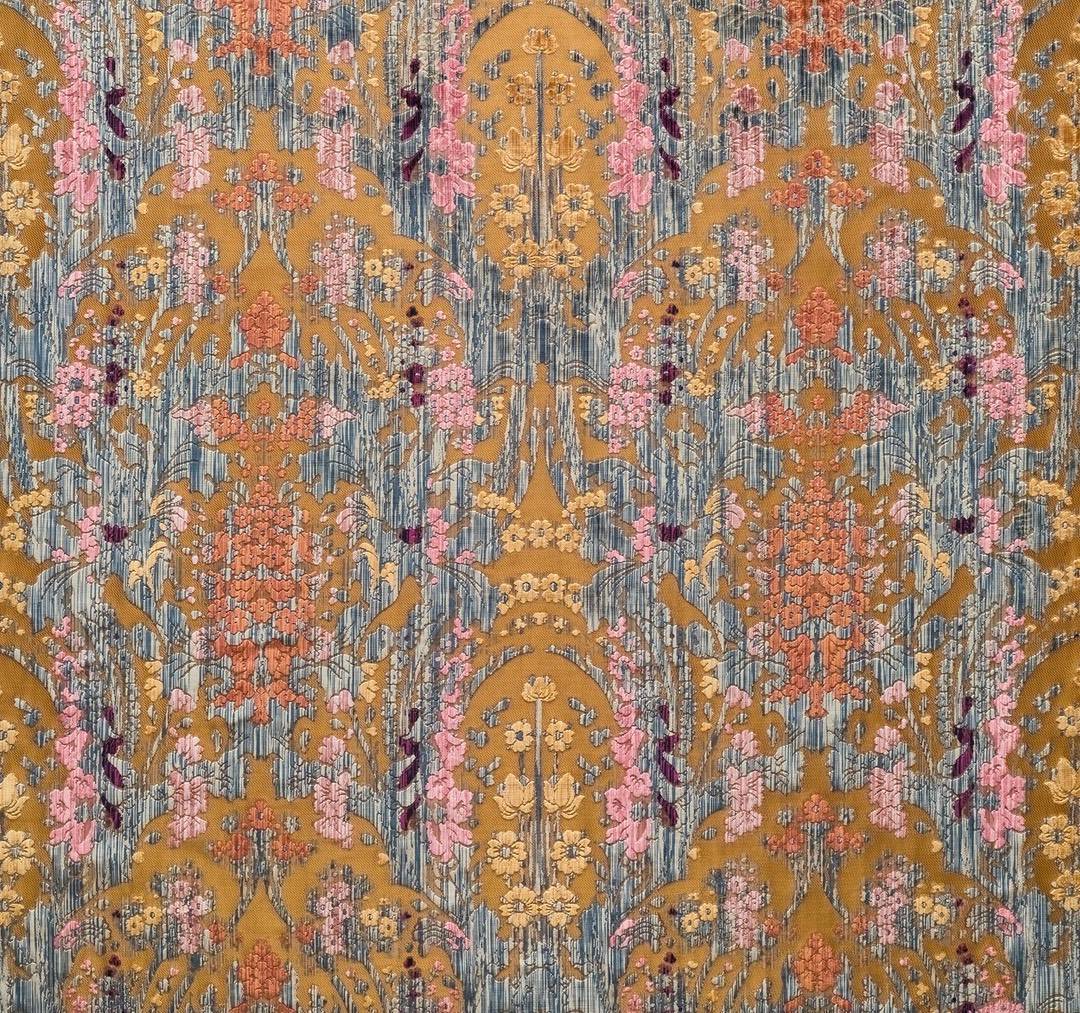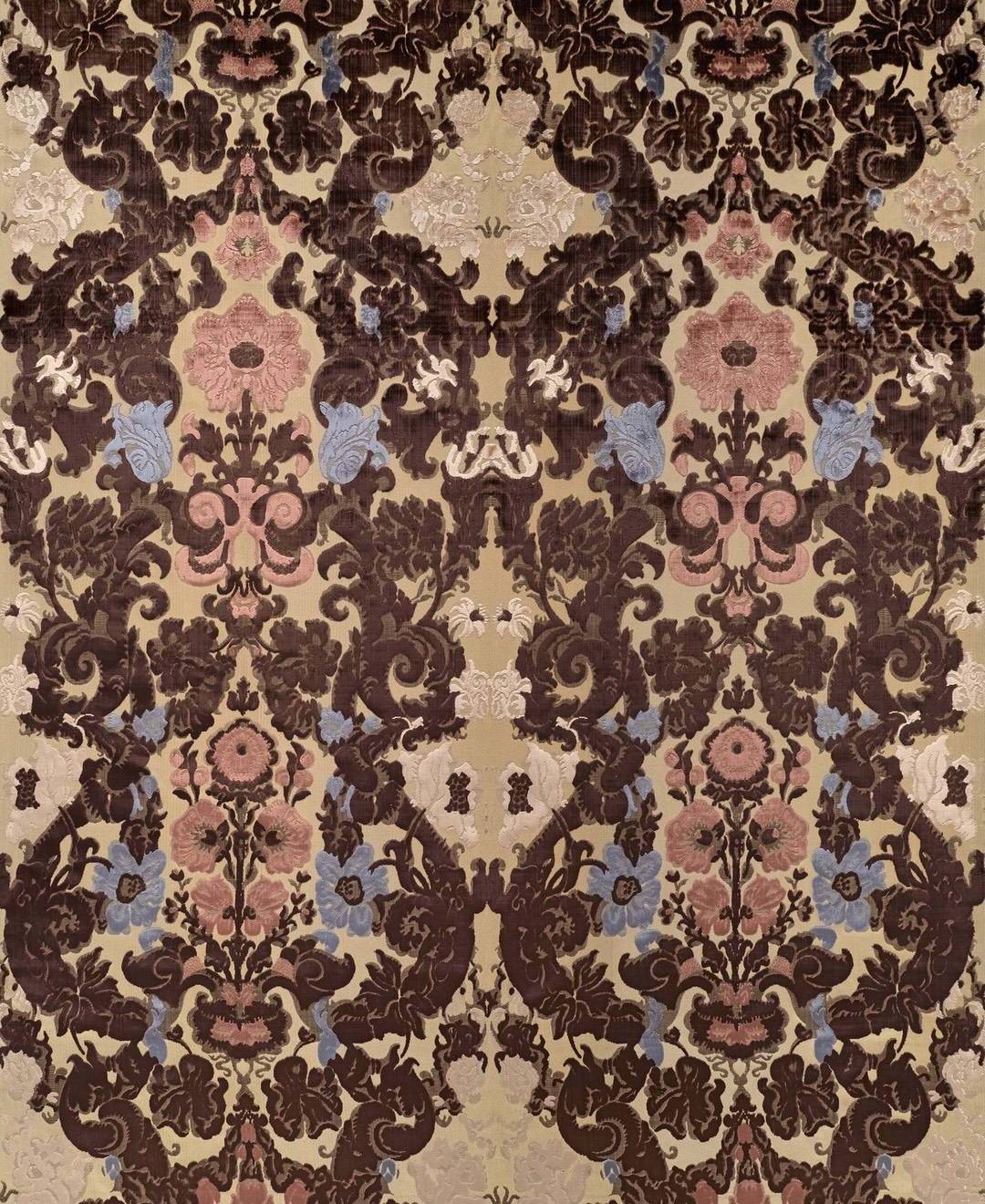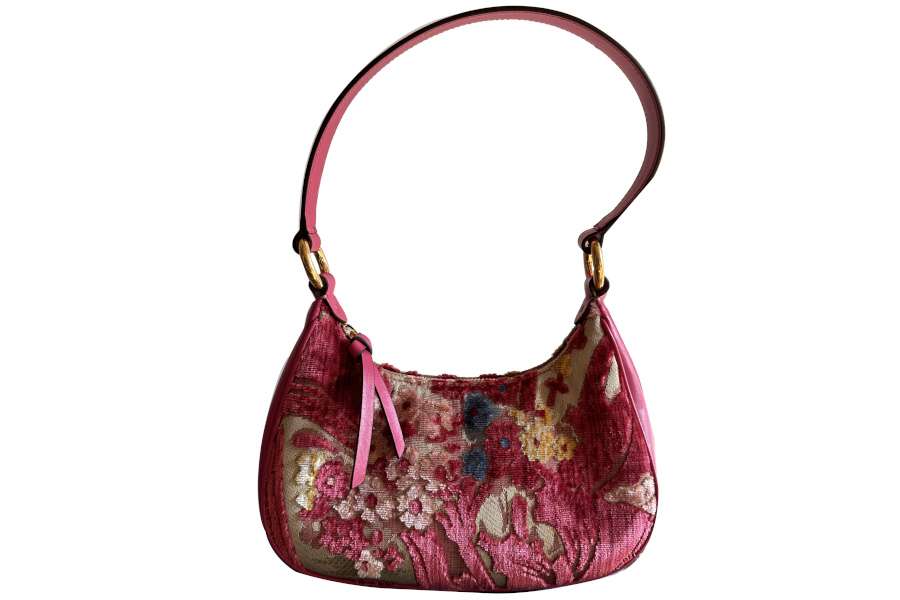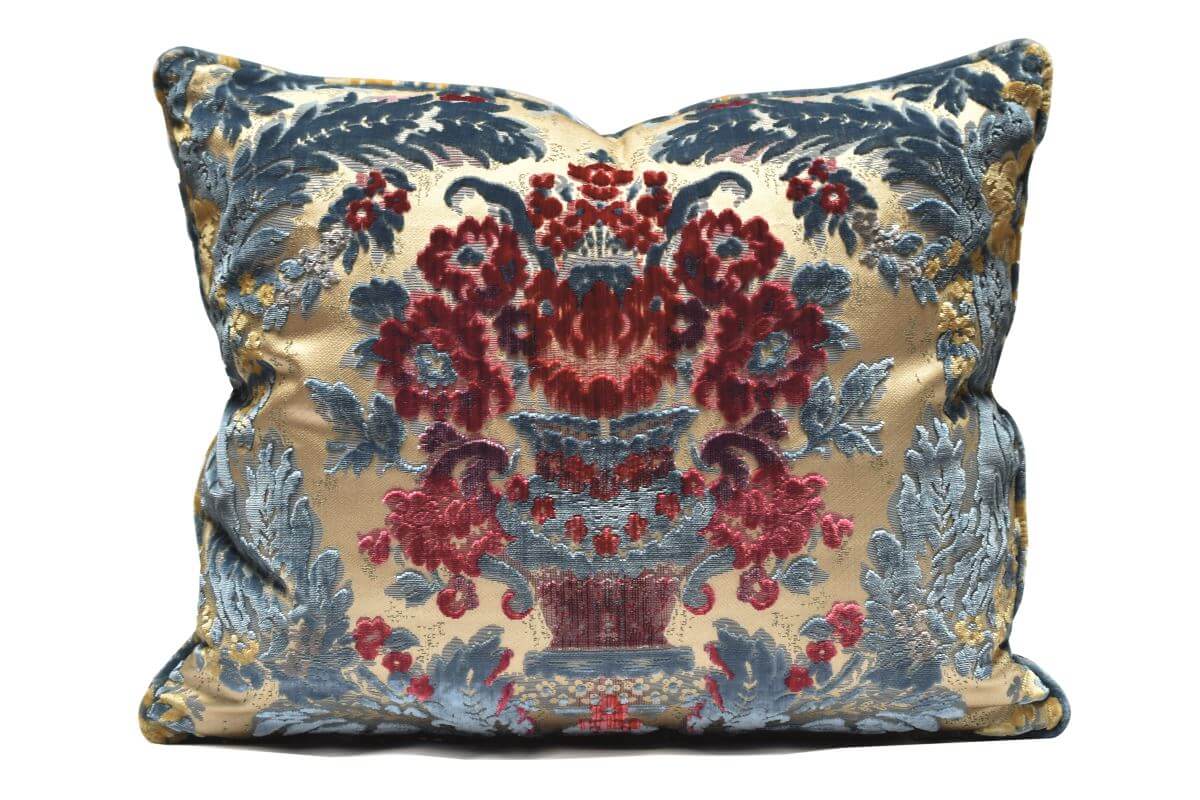To discover what luxury fabrics for home decor with a jardinière pattern are, you need to take a journey from Venice to Genoa. This is the city where these colorful fabrics were born, and only later reached Venice and our Tessitura.
But why is Genoa the birthplace of such spectacular velvets? And why did they come into use only in the 17th century?
The History of Jardinière Velvets: Complex Yet Sought-After Fabrics
Jardinière – or Genoa – velvets first appeared during the 17th century, but drew the crowds up to the 19th century, thanks to their rich details and finesse. They’re indeed blooming flower gardens, in various colors, usually on a light background and accompanied by leaves and wavy stems. These designs, usually pretty large, are arranged symmetrically across the width of the fabric.
The specific intended use of textiles had become more precise since the second half of the 16th century. Clothing fabrics followed the fashions of the time and were characterized by smaller ornamental patterns. Furnishing silks were increasingly present in interiors until they became the most important and expensive stable decoration of rooms. Velvets in particular, due to their characteristics of solidity, durability, and value, manifested with their splendor, colors, and patterns the wealth and power of the owner.
Characterized by the magnificence of the decorations, jardinière velvets made their mark as they were enriched with more and more extensive designs, reflecting the Baroque taste that was spreading. The desire to amaze was reflected in the floral decorations, rich in botanical elements whose weaves were made increasingly swirling by the weavers. The flowers were embellished with details to make them as close to reality as possible, as well as with multiple, splendid colors.
The Production of Polychrome Velvets
The reason why polychrome jardinière velvets became more prominent only from the 17th century onward lies in the complexity of their production. Each color requires an additional set of pile threads, and, especially in the soprarizzo type, the weaver had to know how to match all the colors harmoniously and have in mind how they would turn out when cut since cut velvet is darker than curly velvet. We still encounter the same difficulties today when we prepare the loom to weave a velvet such as Giardino Antico Soprarizzo, because our technical director also has to carefully study the combination of colors and their shades, and our weavers patiently place hundreds of spools of thread on the loom.
Moreover, the production of such colorful fabrics required an enormous amount of resources, silk yarns and, most importantly, time. Making these fabrics required two people at work on the loom: a weaver who took care of the weft and a helper who operated the levers to create the pattern.
These difficulties explain why polychrome velvets, known in the East since the 13th century, were produced in the 15th century only by the most highly specialized manufacturers, especially in Venice and Florence.
Weaving in Genoa
With regard to polychrome jardinière velvets in particular, it happened that in the 17th century, technical innovations in looms were developed in Genoa that made the work somewhat easier and faster and led, in the 19th century, to the invention of the Jacquard loom. These innovations allowed for an increase in the production of these complex fabrics.
In addition, by that time, the quality of Genoa’s weaving and dyeing of yarns had reached very high levels, establishing itself worldwide. For this reason, Genoa has been identified as the home of jardinière velvets.
Jardinière velvets thus spread throughout Europe, in aristocratic palaces and churches. At the same time as its production also expanded to the main centers of velvet making, including Venice, it became the most popular fabric for decorating luxurious interiors in the Baroque era.
Bevilacqua’s Jardinière Velvets for Interior Decoration and More
Floral velvets have not lost their appeal even today, which is why they continue to be a part of our catalog, with ever new colors and designs, even in the most precious type, soprarizzo, and are used for fashion and furnishing accessories, such as those you can see below.
Jardinière Soprarizzo Velvets
Giardino Antico soprarizzo velvet is a silk fabric of the highest quality, handmade using 18th-century looms. Its pattern features a classic jardinière motif, rich in colorful details, plant elements, and stylized flowers.
Giardino Fioroni is a fine silk soprarizzo velvet, handmade on 18th-century looms. It features an exclusive Baroque design depicting rosebuds, tulips, bellflowers, and jasmine.
Giardinetto soprarizzo velvet, handmade on 18th-century looms, features an intricate 18th-century design of small flowers, stems, and leaves. This unique fabric was used to decorate the luxurious transatlantic liner Conte di Savoia in 1930.
Piovego soprarizzo velvet, handmade on 18th-century looms, features a design with large curled acanthus leaves and thistle and tulip flowers, an example of textile art of the highest quality.
Multicolored Jardinière Velvets
Some velvets, such as the Fioroni multicolored velvet, the Giardinetto multicolored velvet, and the Giardino Antico multicolored velvet, are also produced in the mechanical version, again of the highest quality and in different color variations. The Fresie Multicolored Velvet and the Palermo Multicolored Velvet are also added to these.
Made with jardinière velvets, you can also find some of the bags in our collection, such as the Luna Hobo Bag in Fresie velvet, and beautiful decorative pillows, such as the Giardino Antico velvet pillow, to make the rooms of your home unique.
Cover Photo - Fioroni Soprarizzo Handmade Velvet

